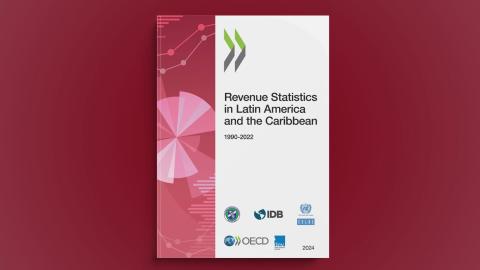Press Release
Fiscal panorama of Latin America and the Caribbean
(05 March, 2013) Over the past decade (in particular since 2002), most countries in the region witnessed a substantial increase in their tax burden as a percentage of GDP, together with far-reaching structural changes, including consolidation of the value added tax (VAT), a significant improvement in the share of direct taxes in total tax receipts and a decline in tariffs on international trade. A number of factors contributed to this increase in the tax burden (albeit conditions varied significantly from one country to the other): stronger world economic growth, a steady rise in commodity prices, a favourable macroeconomic context, new taxes such as the tax on financial transactions or minimum taxes, cuts in exemptions or deductions, advances in tax administration and a reduction in inequality accompanied by a rise in consumption. Thus, between 2000 and 2011, total fiscal revenues strengthened from 19.6% to 23.6% of GDP in Latin America and from 24.5% to 28.3% of GDP in the Caribbean; meanwhile the tax burden (excluding social security contributions) climbed from 12.7% to 15.7% in Latin America and from 19.3% to 23.0% in the Caribbean.
The size of the increase varied across countries. The greatest improvements in the tax burden (in the narrow sense of the term, that is, without including social security contributions) occurred in Argentina and Ecuador and were equivalent to 2 or more percentage points of GDP in most countries. Nevertheless, progress was less significant in the group of countries (with the exception of Haiti) where the tax burden is lowest, while Bolivarian Republic of Venezuela and Mexico actually saw their tax burden (narrow sense) decline.
In those countries that rely on the exploitation of non-renewable natural resources, the State's share of the economic revenues and relative fiscal contribution of the export sectors of these resources (minerals and hydrocarbons) expanded during the last boom period, between 2003 and 2010, in contrast with the performance of the preceding period between 1990 and 2003. Between 1999-2001 and 2009-2011, income from the exploitation of primary products rose by 7.2 percentage points of GDP in Ecuador, 7.0 in Trinidad and Tobago, 4.5 in the Plurinational State of Bolivia, 3.0 in Argentina, 2.9 in Chile, 2.2 in Colombia and 1.4 in Mexico and Peru. Only in the Bolivarian Republic of Venezuela did revenue decline (by 0.4 percentage points), although, along with the other hydrocarbon exporters (Ecuador, Mexico, Plurinational State of Bolivia, and Trinidad and Tobago), Venezuela continued to rely heavily on non-renewable natural resources. In all of these countries, levies on non-renewable natural resources accounted for over 30% of total fiscal revenue. Other Latin American countries, including Chile, Colombia and Peru as well as Argentina, also benefited from the increase in raw material prices and exported huge volumes of minerals but their fiscal dependency on the latter was lower (at around 10% and 20% of total revenue) as they also received revenues from taxes on agricultural exports.


